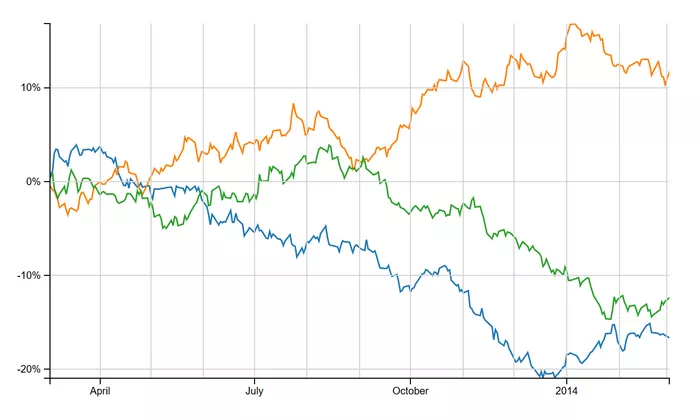As the world moves towards cleaner energy solutions, blue hydrogen has gained significant attention as a promising alternative to traditional fossil fuels. With its potential to play a critical role in reducing carbon emissions, blue hydrogen stocks have become an increasingly popular investment choice. If you’re considering adding blue gas hydrogen stocks to your portfolio, it’s important to understand the process, the companies involved, and the factors that influence their performance. This comprehensive guide will walk you through everything you need to know about buying blue hydrogen stocks.
What is Blue Hydrogen?
Blue hydrogen refers to hydrogen produced from natural gas through a process known as steam methane reforming (SMR), coupled with carbon capture and storage (CCS) technology. The goal of blue hydrogen is to reduce the carbon emissions associated with traditional hydrogen production, making it a cleaner alternative. This process helps mitigate the environmental impact of hydrogen production by capturing and storing the carbon dioxide (CO₂) emissions that would otherwise be released into the atmosphere.
Why Invest in Blue Hydrogen Stocks?
Blue hydrogen has become a focal point in the global energy transition. Governments and industries are increasingly focused on reducing carbon emissions, and hydrogen, especially blue hydrogen, is seen as an essential component of this transition. As nations push for net-zero emissions and cleaner energy, blue hydrogen stocks represent an investment opportunity in a rapidly growing industry.
Key Benefits of Blue Hydrogen:
Environmental Impact: Blue hydrogen offers a cleaner alternative to traditional hydrogen production and can be part of the solution to tackling climate change.
Growing Market: As more countries set ambitious carbon-neutral goals, the demand for hydrogen solutions is expected to rise, potentially boosting the value of blue hydrogen stocks.
Energy Diversification: Blue hydrogen plays a role in diversifying the energy mix and is seen as a complement to renewable energy sources like wind and solar.
Step-by-Step Process to Buy Blue Gas Hydrogen Stocks
1. Research Blue Hydrogen Companies
The first step in buying blue hydrogen stocks is to research companies that are involved in blue hydrogen production or related technologies. The blue hydrogen sector includes several key players, such as energy companies, hydrogen technology providers, and firms specializing in carbon capture.
Key Companies in Blue Hydrogen
Some companies are particularly well-positioned to benefit from the rise of blue hydrogen:
Air Products and Chemicals, Inc. (APD): A leading global industrial gases company involved in the production and supply of hydrogen.
Royal Dutch Shell (RDS.A): One of the largest energy companies investing heavily in hydrogen production, including blue hydrogen projects.
BP (BP): BP is focused on scaling up hydrogen production, with an emphasis on low-carbon hydrogen technologies.
Equinor ASA (EQNR): A Norwegian energy company that is actively involved in blue hydrogen initiatives through its carbon capture and storage projects.
ITM Power (ITM): A leading player in hydrogen technology, providing solutions for hydrogen production and storage.
How to Identify the Right Companies to Invest In
When researching companies in the blue hydrogen space, consider these factors:
Technology Expertise: Does the company have strong expertise in hydrogen production, carbon capture, and storage?
Partnerships and Projects: Companies engaged in large-scale blue hydrogen projects or collaborating with governments and other energy firms could be key players.
Financial Stability: Examine the company’s financial health, including revenue, profit margins, and debt levels.
Market Position: Assess the company’s position in the industry and its potential for growth, considering the increasing demand for cleaner energy solutions.
2. Analyze the Market Dynamics
Before investing, it’s important to understand the market dynamics that drive the performance of blue hydrogen companies. The hydrogen market is still evolving, and several factors can impact the success of companies in this sector.
Key Factors to Monitor
Government Policies: Governments around the world are introducing policies to support the development of hydrogen technologies, including subsidies, tax incentives, and emission reduction targets. For example, the European Union has set ambitious targets for green and blue hydrogen production by 2030.
Energy Demand: The growing demand for clean energy solutions and the need to decarbonize heavy industries like transportation, steel, and chemicals will drive the need for hydrogen.
Technological Advancements: Innovations in hydrogen production, storage, and transportation technologies could increase the efficiency and reduce the costs of blue hydrogen, benefiting companies in the space.
Carbon Pricing: The implementation of carbon pricing and emissions trading systems could make blue hydrogen more competitive relative to other energy sources.
3. Choose the Right Investment Vehicle
Once you’ve identified promising companies, it’s time to decide how to invest in blue hydrogen stocks. There are several options, each with its advantages and disadvantages.
Direct Stock Purchase
The most straightforward approach is to buy shares of individual companies involved in blue hydrogen production. This allows you to directly invest in the success of those companies. However, investing in individual stocks also carries higher risk, as the success of the company depends on a range of factors including management decisions, market conditions, and technological breakthroughs.
Exchange-Traded Funds (ETFs)
If you’re looking for a more diversified approach, you can consider investing in ETFs that focus on the clean energy or hydrogen sector. These funds hold a basket of stocks from companies involved in hydrogen production and related technologies, including blue hydrogen. Some popular hydrogen-focused ETFs include:
Global X Hydrogen ETF (HYDR): This ETF includes companies involved in hydrogen production, including blue hydrogen.
iShares Global Clean Energy ETF (ICLN): While not exclusively focused on hydrogen, this fund invests in companies involved in the broader clean energy transition, including hydrogen.
Hydrogen Futures Contracts
For more advanced investors, hydrogen futures contracts represent another way to gain exposure to the hydrogen market. These contracts allow you to buy or sell hydrogen at a predetermined price on a future date. However, futures trading requires a deep understanding of the market and is typically more volatile and speculative.
4. Open a Brokerage Account
To buy blue hydrogen stocks, you’ll need a brokerage account. Most online brokers provide access to a wide range of stocks, ETFs, and other investment vehicles, including hydrogen-related investments.
Choosing the Right Broker
When selecting a broker, consider the following factors:
Fees: Look for a broker with low trading commissions and no hidden fees.
Research Tools: Choose a broker that offers access to research reports, financial analysis, and tools to track hydrogen stocks and market trends.
Account Types: Some brokers offer tax-advantaged accounts like IRAs, which could be beneficial if you’re planning for long-term investment.
5. Make Your Purchase
Once your account is set up and funded, you can place an order to buy blue hydrogen stocks or ETFs. There are two main types of orders you can place:
Market Orders: These orders allow you to buy the stock at the current market price. It’s the most common type of order.
Limit Orders: You can set a price at which you’re willing to buy the stock. The order will only execute if the stock hits that price.
If you’re purchasing shares of a blue hydrogen ETF, you can place a market or limit order for the fund. Always keep in mind your overall investment strategy, including the size of your position and how it fits within your broader portfolio.
6. Monitor Your Investment
After buying blue hydrogen stocks, it’s essential to monitor your investments regularly. Keep an eye on news and developments in the hydrogen sector, including advancements in production technology, policy changes, and the performance of the companies you’ve invested in. Also, watch for broader market trends that could impact the energy sector, such as fluctuations in oil prices or global demand for clean energy.
Regular Review
Regularly reviewing your portfolio and making adjustments as needed is important to ensure that your investments align with your goals. If you notice any changes in the financial health of the companies you’re invested in or any shifts in the hydrogen market, consider adjusting your holdings accordingly.
Key Considerations When Investing in Blue Hydrogen Stocks
1. Market Volatility
The hydrogen sector is still in its early stages, and the market can be highly volatile. Technological breakthroughs or regulatory changes can dramatically affect stock prices. Be prepared for fluctuations and assess your risk tolerance before investing.
2. Technological and Commercial Risks
Blue hydrogen technologies, while promising, are still evolving. The commercial viability of these technologies depends on overcoming challenges related to cost reduction, scalability, and infrastructure development. Companies involved in hydrogen production may face challenges as they scale up operations.
3. Regulatory Landscape
Government policies play a significant role in the success of blue hydrogen projects. Shifts in regulations, such as changes in carbon pricing or subsidies, can directly impact the profitability of companies in the hydrogen sector.
4. Long-Term Investment Horizon
Blue hydrogen stocks are likely to benefit from long-term trends in the clean energy sector. If you’re considering an investment in this space, be prepared for a long-term investment horizon and stay focused on the growth potential of the hydrogen market.
Conclusion
Investing in blue gas hydrogen stocks can be an exciting and potentially rewarding opportunity for investors looking to capitalize on the growing demand for clean energy solutions. By researching the companies involved, analyzing market trends, and understanding the risks and opportunities in the blue hydrogen sector, you can make informed decisions about adding these stocks to your portfolio. Whether you choose to invest in individual stocks, ETFs, or other financial products, it’s essential to monitor developments in the hydrogen market and adjust your investments as necessary.
Related topics:




























